Synta Pharmaceuticals (NASDAQ:SNTA) has just announced preliminary results from an investigator-sponsored Phase I clinical trial of its flagship product ganetespib. The small study which was led and designed by researchers at New York University Langone Medical Center and Memorial Sloan Kettering Cancer Center evaluated ganetespib in combination with paclitaxel and trastuzumab in women with HER2+ metastatic breast cancer that was refractory to treatment with other HER2 inhibitors. The study enrolled six heavily pretreated patients who prior to entering the trial, receive a median of 3.5 anti-HER2 including trastuzumab, pertuzumab, and ado-trastuzumab emtansine. The trial was done to see if ganetespib could lead to a full or partial tumor response in addition to extending progression free survival. The results were decent. Of the five patients evaluable for efficacy, partial tumor response was observed in one patient who remains on study, and four patients achieved stable disease ranging in duration from 11 to 29 weeks. Median progression free survival was 19.4 weeks and the proportion of patients achieving objective response or stable disease greater than 24 weeks was 60%. Side effects were minimal.
When I previously covered Synta in depth, I had argued that...READ MORE
This blog provides analysis, advice, trade ideas and other happenings. I frequently publish research at major investing websites. The most featured sectors on this website will depend on what is currently trending and hot in the market.
Custom Investing Search Tool
Monday, December 15, 2014
Dont give up on Response Genetics
Response Genetics (NASDAQ:RGDX) has just announced that it has received approval from the New York State Department of Health to offer, market and report results of its ResponseDX tests to healthcare providers in the State of New York. This is a huge announcement for the company. Why? Well because New York is the third most populated state in the U.S. and the addition of this license to provide testing here will most certainly contribute to the continued growth of the company's ResponseDX sales in 2015. In just the last quarter, the company hit another sales record with its ResponseDX line. I fully expect new sales records in 2015 on the back of this news.
When I covered Response Genetics in depth I laid out a clear analysis showing the turn around the company was undergoing. The last quarter was clearly an indication that the thesis was playing out. However, the stock has clearly moved in the opposite direction of the company. That said, I....READ MORE
When I covered Response Genetics in depth I laid out a clear analysis showing the turn around the company was undergoing. The last quarter was clearly an indication that the thesis was playing out. However, the stock has clearly moved in the opposite direction of the company. That said, I....READ MORE
Hecla mining and its quarter
Hecla Mining (NYSE:HL) just announced its third quarter operating results. All three of the company's mines performed well in the quarter helping to deliver a beat on revenue estimates although earnings missed estimates by $0.02. All three of the companies mines were producing splendidly and led to production of 2.9 million ounces of silver at a cash cost of about $5.43 per ounce. This was a whopping 25% increase year-over-year. Further the company also produced 42,501 ounces of gold around $900 an ounce which was a 15% production increase compared to last year. Revenues came in at $135 million, a 27% year-over-year rise. Net income was $3.5 million, or $0.01 per share, compared to a net loss of $8.6 million, or $0.03 per share for the third quarter last year. After special adjustments, the company saw a loss of a penny. In a sign of strength, the company did not bleed cash quarter-over-quarter as its cash and cash equivalents were unchanged at $222 million. Despite much lower metal prices, this was a...READ MORE
Western Asset Mortgage---Im shocked
Western Asset Mortgage (NYSE:WMC) has just reported its third quarter. I have to say the dividend king has shown it is not "immortal". While mREITs as a whole struggled in the third quarter, I wasn't just surprised - I was shocked - when I saw the numbers out of WMC. The company saw GAAP net income of just $26.1 million, or $0.63 per basic and diluted share. This compares to net income of $67.6 million, or $1.68 per basic and diluted share for the second quarter. That is an unbelievable decline. I really am in disbelief. Further disappointing was that WMC generated core earnings plus drop income of only $27.8 million, or $0.67 per basic and diluted share, failing to cover the $0.70 dividend. This compares to core earnings plus drop income of $40.0 million, or $1.00 per basic and diluted share for the second quarter. What about the key metrics of the company?
I'll be up front. The spread sucked. It got.....READ MORE
I'll be up front. The spread sucked. It got.....READ MORE
More on MeetMe's earnings
MeetMe (NASDAQ:MEET) just reported its third quarter earnings. And guess what? It actually turned a profit! MeetMe beat estimates on the top and bottom lines. It all stems from the innovations the company is implementing that have led to record user growth. Total revenue in the quarter was $11.6 million, up 15% from the third quarter of 2013. Mobile revenue was $6.7 million or 58% of the revenue and was up 128% from the third quarter of 2013. Mobile average revenue per user (ARPU) was $2.29, up 108% from $1.10 in the third quarter of 2013, and exceeded web ARPU of $1.01 for the fourth consecutive quarter. Mobile average revenue per daily active user ((ARPDAU)) was $0.082, up 105% from $0.040 in the third quarter of 2013.Adjusted EBITDA was $2.2 million, up 213% from $696,000 in the third quarter of 2013. This all led to the company actually turning a profit. Net income was $52,000 compared to a net loss of $1.5 million for the third quarter of 2013. What a turn-around indeed. Cash and equivalents totaled $15.6 million at the quarter's end following these earnings and a completed equity offering which provided the Company with net proceeds of $10.5 million.
When I last opined on MeetMe I clearly....READ MORE
When I last opined on MeetMe I clearly....READ MORE
Annaly Capital, stay the course
Annaly Capital (NYSE:NLY) has been a name that I have long followed. After the company recently reported its third quarter earnings I decided to pen an article to argue why I am not backing away from the stock. Sure it is a cyclical business. Timing buys in this stock over the long-term is key. We buy stock in mREITs for one of two reasons: to reinvest dividends over time to compound our investments, or to generate a source of income. Despite the stock shedding 40% plus since its highs, management remains effective and the current dividend is safe. The company is on the mend and is outcompeting many of its mREIT brethren as I will outline in this article. Its quarter was quite strong, with few weak points.
First.....READ MORE
First.....READ MORE
Friday, October 24, 2014
How I recommend playing Ebola
Is the bull market about to perish? It's been a real scary month here in October. At the time of this writing we are down 6.0% in the Dow Jones Industrial average (NYSEARCA:DIA) and down 6.5% in the S&P 500 SPDR ETF (NYSEARCA:SPY) this month. The NASDAQ ETF (NASDAQ:QQQ) has been crushed, shedding 7.6% so far. Are we setting up for a real bearish end to the year despite all of the jubilant expectations that investors had heading into the fall? It may be too early to tell, but here are the facts. A large correction is what traders and investors are fearing after seeing the incredible fall in commodities. It started with precious metals, then coal and iron ore and now oil. They are all getting hammered. Demand in slipping. Profits are leveling in many sectors. But here is the icing on the cake. We have this whole Ebola situation that has markets spooked. While the former issues are simply the ups and downs of markets, the latter situation, Ebola, is causing irrational fear.
Ebola: Let's talk about the facts here
Let me wear my epidemiologist hat for a moment. I have been inundate with requests for how to......READ FULL ARTICLE
Ebola: Let's talk about the facts here
Let me wear my epidemiologist hat for a moment. I have been inundate with requests for how to......READ FULL ARTICLE
Wednesday, October 22, 2014
3D Systems TANKS---HERES WHY
3d is getting crushed and I have just unloaded my sahres
The damn company announced today that it anticipates its third quarter revenue to be in the range of $164 million to $169 million and a sequentially growing order book of $42 million. This hurt. The company expects to report GAAP earnings per share in the range of $0.01 to $0.03 and non-GAAP EPS in the range of $0.16 to $0.19. These are preliminary results based on current expectations and are subject to quarter-end closing adjustments, actual results may differ.
Strengthening sales of the company's design, manufacturing and healthcare products and services were not enough to overcome the revenue shortfall from the continued manufacturing capacity constraints for its direct metals printers and delayed availability of its newest consumer products.
"We are disappointed that we failed to fully capitalize on the robust demand for our direct metal and consumer products during the quarter," said Avi Reichental, President and Chief Executive Officer, 3DS. "While we worked very hard to deliver these products sooner, achieving manufacturing scale, quality and user experience targets took significantly longer than we had anticipated."
At the end of the third quarter, the company brought online a second direct metal 3D printers' manufacturing line and began commercial shipments of its latest consumer printers.
"Now that we have closed these availability gaps, we expect our revenue growth rate to increase," continued Reichental.
The company expects to report that its materials' gross profit margins rebounded for the quarter and its Quickparts' gross profit margin expanded sequentially, despite greater drag from concentrated service bureau acquisitions in the quarter. Notwithstanding these gains, the company expects its consolidated gross profit margin for the quarter to remain sequentially flat as a result of the current sales volume and mix and the residual costs of manufacturing start up and ramp.
"Our accelerated investments in new products and acquisitions contributed to a record order book in every period of this year, but disrupted revenue generation and pressured our gross profit margins. Now that we are shifting our attention to fine-tuning these investments, we expect to leverage them into a valuable and sustainable first-mover advantage," stated Reichental.
Factoring in its third quarter revenue shortfall and outlook for the remainder of the year, management trimmed its previous guidance for the full year 2014. Management now expects revenue in the range of $650 million to $690 million, and GAAP earnings per share of $0.18 to $0.28 and non-GAAP earnings per share in the range of $0.70 to $0.80.
"The same decisive actions that pressured our short term performance also delivered a much stronger portfolio of self-developed and acquired products and services. In the aggregate, we believe this positions us well to achieve our long-term targets," concluded Reichental.
Thursday, October 16, 2014
Buying more RXi
RXi Pharmaceuticals (OTC:RXII) has just filed a form 4 with the Securities Exchange Commission. Recall that a form 4 refers to insider transactions at the company. Well, at RXi, there has been a wave of insider buying by CEO Geert Cauwenbergh over the last month ever since its large sell-off. The CEO now owns a substantial stake in the company. According to the filing, yesterday during the open market (10/13/14), CEO Geert Cauwenbergh purchased another 3,000 shares. The shares were purchased at the price of $1.6799. If we dig a little deeper we see that the shares bring his total stake to 44,000 shares, many of which have been purchase since the start of September. The purchasing has not done much to stop the shares from falling, although at $1.72 prices are stabilizing. At current price shares are at an opportunity level never before seen in RXi and it stems from small cap biotech weakness as a whole,
So what am I doing? I am buying more shares this week. Doubling position in the $1.68-$1.75 range
So what am I doing? I am buying more shares this week. Doubling position in the $1.68-$1.75 range
Friday, October 10, 2014
Tesla's D-Day
Tesla Motors (TSLA) CEO Elon Musk turned a product upgrade announcement into a major media event, building anticipation over the course of a week by dropping a few clues on social media and dancing around questions about "Unveiling the D".
Tesla's D-Day generated the kind of buzz every other automaker dreams of. For that, he deserves all the credit in the world. It's what every CEO would love to do.
That said, let's separate the hype from the reality.
1) Dual Motor All Wheel Drive
Hype: The dual motor AWD will improve efficiency of the Model S and win over buyers in cold weather states.
Reality: You can find this feature in most other luxury cars, and Tesla needed to offer it.
Will it drive major sales gains? Probably not.
"The drivers who will buy the 'D' wanted the Model S from day one. Tesla is simply responding to their needs. Adding all-wheel drive is the no-brainer way to capture those car shoppers," said Ivan Drury with Edmunds.com
2) Auto Pilot Features
Hype: This technology, using a new suite of radars, GPS and a camera with image recognition is a game changer.
Reality: Yes and no.
The truth is some of the driver assist features Musk unveiled (adaptive cruise control for example) are already in many other cars.
That said, Tesla added a few wrinkles that make the S very unique.
Can your car open the garage door and park itself once you pull into the driveway? No, but the Model S will soon be able to do that.
Does your car automatically change lanes once you put on your turn signal? No, but the Model S will soon have that capability.
3) Tesla is best positioned to roll out the first autonomous drive car
Hype: The Tesla fans will tell you Elon Musk will soon have a self-driven car ready to roll.
Reality: Tesla will be ready when fully autonomous drive cars finally become a reality in the next ten to fifteen years.
However, Tesla won't be alone. Several other auto makers and tech companies will be ready with their own autonomous drive vehicles or technology for autonomous drive cars.
Musk summarized the development of autonomous-drive Tesla's: "We're not yet at the point where you can get in the car, fall asleep and wake up at your destination."
Overall, Musk's show in Southern California enhanced the reputation and allure of Tesla with an event that is unlike what we usually see from automakers.
Tesla unveils don't happen very often, but when they do, they have the feel of an Apple product reveal.
Even the way Musk describes features is far different than the button downed approach we often see from executives at auto shows.
Consider how Musk described the P85D version of the Model S on Thursday night?
"This car is nuts. It's like taking off from a carrier deck," he said. "It's just bananas. It's like having your own personal roller coaster."
Tesla's D-Day generated the kind of buzz every other automaker dreams of. For that, he deserves all the credit in the world. It's what every CEO would love to do.
That said, let's separate the hype from the reality.
1) Dual Motor All Wheel Drive
Hype: The dual motor AWD will improve efficiency of the Model S and win over buyers in cold weather states.
Reality: You can find this feature in most other luxury cars, and Tesla needed to offer it.
Will it drive major sales gains? Probably not.
"The drivers who will buy the 'D' wanted the Model S from day one. Tesla is simply responding to their needs. Adding all-wheel drive is the no-brainer way to capture those car shoppers," said Ivan Drury with Edmunds.com
2) Auto Pilot Features
Hype: This technology, using a new suite of radars, GPS and a camera with image recognition is a game changer.
Reality: Yes and no.
The truth is some of the driver assist features Musk unveiled (adaptive cruise control for example) are already in many other cars.
That said, Tesla added a few wrinkles that make the S very unique.
Can your car open the garage door and park itself once you pull into the driveway? No, but the Model S will soon be able to do that.
Does your car automatically change lanes once you put on your turn signal? No, but the Model S will soon have that capability.
3) Tesla is best positioned to roll out the first autonomous drive car
Hype: The Tesla fans will tell you Elon Musk will soon have a self-driven car ready to roll.
Reality: Tesla will be ready when fully autonomous drive cars finally become a reality in the next ten to fifteen years.
However, Tesla won't be alone. Several other auto makers and tech companies will be ready with their own autonomous drive vehicles or technology for autonomous drive cars.
Musk summarized the development of autonomous-drive Tesla's: "We're not yet at the point where you can get in the car, fall asleep and wake up at your destination."
Overall, Musk's show in Southern California enhanced the reputation and allure of Tesla with an event that is unlike what we usually see from automakers.
Tesla unveils don't happen very often, but when they do, they have the feel of an Apple product reveal.
Even the way Musk describes features is far different than the button downed approach we often see from executives at auto shows.
Consider how Musk described the P85D version of the Model S on Thursday night?
"This car is nuts. It's like taking off from a carrier deck," he said. "It's just bananas. It's like having your own personal roller coaster."
Oceabn Biochem could crash
Another day and OBCI is up.
In a superb example of the exuberance of quick buck opportunists, traders are reacting to the Ebola news fire hose by bidding up thinly-traded nano cap Ocean Bio-Chem on a 4x surge in volume in the last week. Prices are skyrocketing and could crash.
The company makes a broad-spectrum disinfectant called Xtrem-A-Cide that contains chlorine dioxide. Supposedly, it will be effective in eradicating stray Ebola viruses deposited by infected patients.
Xtrem-A-Cide is now being marketed as Performacide. It can be found on the starbrite.com website.
Don't buy into the hype
In a superb example of the exuberance of quick buck opportunists, traders are reacting to the Ebola news fire hose by bidding up thinly-traded nano cap Ocean Bio-Chem on a 4x surge in volume in the last week. Prices are skyrocketing and could crash.
The company makes a broad-spectrum disinfectant called Xtrem-A-Cide that contains chlorine dioxide. Supposedly, it will be effective in eradicating stray Ebola viruses deposited by infected patients.
Xtrem-A-Cide is now being marketed as Performacide. It can be found on the starbrite.com website.
Don't buy into the hype
Why Response Genetics is Soaring
Response Genetics is SOARING on triple the daily volume in the first half hour of trading. I think something may have leaked but lets not forget there has been some recent news that has not moved the stock including
For more read here....FULL ARTICLE
Wednesday, October 8, 2014
GT Advanced--Get out while you can
Look, I recently covered the drama surrounding GTAT. Its going bankrupt, CRUSHING investors. How? It got paid by AAPL.
GTAT's supplier agreement with Apple called for GTAT to produce sapphire for Apple on GTAT's own production equipment in an Apple owned facility in Mesa, AZ. Apple would provide $578 million in 4 prepayments (essentially a loan) for the sapphire with repayment commencing in 2015. As of the end of 2013, GTAT had already received 2 of the 4 payments totaling $225 million. But the company has BURNED cash dramatically and when it wasn't selected for the iPHONE, smart investors bailed out. Did the CEO mislead investors? YES and NO. I suspect there will be tons of lawsuits. For now. the stock had rebounded to almost $2.00 giving investors a chance to get out, but has now dropped back to almost a $1.00. Get out of this while you still can, because it is GOING TO BE WORTHLESS IN A FEW MONTHS
GTAT's supplier agreement with Apple called for GTAT to produce sapphire for Apple on GTAT's own production equipment in an Apple owned facility in Mesa, AZ. Apple would provide $578 million in 4 prepayments (essentially a loan) for the sapphire with repayment commencing in 2015. As of the end of 2013, GTAT had already received 2 of the 4 payments totaling $225 million. But the company has BURNED cash dramatically and when it wasn't selected for the iPHONE, smart investors bailed out. Did the CEO mislead investors? YES and NO. I suspect there will be tons of lawsuits. For now. the stock had rebounded to almost $2.00 giving investors a chance to get out, but has now dropped back to almost a $1.00. Get out of this while you still can, because it is GOING TO BE WORTHLESS IN A FEW MONTHS
AT&T paying $105 million yikes
AT&T agreed to pay $105 million to settle claims that it allowed third-party companies to bill subscribers for millions of dollars in unauthorized charges, federal and state law enforcement officials announced Wednesday.
Federal Trade Commission and Federal Communications Commission officials alleged that until January, AT&T billed subscribers for “hundreds of millions of dollars” in charges from outside companies. The charges for services like ringtone subscriptions usually cost $9.99 a month and AT&T kept at least 35 percent of the money, federal officials said.
AT&T will pay $80 million to refund money to current and former AT&T customers who were hit with unauthorized charges. States participating in the settlement agreement will get $20 million from AT&T to settle the allegations and the federal government will get $5 million.
AT&T ran afoul of the FTC’s ongoing investigation into wireless cramming and the FCC’s truth-in-billing rules, which require companies to make it clear what consumers are being charged for on their monthly statements.
“Today’s settlement, while focused on the fast-growing mobile industry, underscores a time-tested principle of consumer protection. Consumers must not be charged for goods or services they did not authorize, whether on their mobile phone, shopping online, or in a brick-and-mortar store,” FTC Chairwoman Edith Ramirez said Wednesday.
AT&T subscribers can go to ftc.gov/att for information about the refund program, which the FTC will handle.
In a statement, AT&T said that while it had “rigorous protections in place to guard consumers against unauthorized billing” it also took steps last year to discontinue the practice. “This settlement gives our customers who believe they were wrongfully billed for [premium SMS] services the ability to get a refund,” an AT&T spokesman said.
AT&T’s decision to settle the government’s complaint, instead of fight the allegations like T-Mobile, comes as the company is trying to convince government regulators to approve its $48 billion deal to acquire DirecTV.
Wireless cramming happens when a third-party company places a charge on a subscriber’s mobile phone bill without authorization. These so-called “Premium SMS” charges are often for things like subscriptions to online horoscopes or celebrity gossip. A wireless carrier gets a cut of the take.
The practice has been happening for years but the FTC only began focusing on the issue after receiving hundreds of consumer complaints. Often it can be hard to find information about the charges or details about how to stop them, the FTC says.
The FTC sued T-Mobile in July, accusing the carrier of making hundreds of millions of dollars in fees by allowing known scammers to put fraudulent unauthorized expenses on subscriber bills. T-Mobile denied the charges.
The government’s lawsuit against T-Mobile and settlement with AT&T over wireless cramming charges suggests that Sprint and Verizon Wireless could be targeted next, as all of the major carriers allowed the practice. An FTC spokesman declined to comment. FCC Chairman Tom Wheeler suggested other wireless carriers may also face similar complaints. The AT&T settlement “is not the last time we will act jointly” on this issue, Wheeler told reporters.
In July, a report from the Senate Commerce Committee charged that the country’s largest wireless carriers have known about the problem since 2008 but haven’t done enough to stop it because they receive anywhere from 30 percent to 40 percent of the income, which means hundreds of millions of dollars.
Last year, AT&T, T-Mobile, Verizon and Sprint announced plans to phase out such third-party billing services except in the case of charitable or political giving.
The wireless industry’s trade group, CTIA, has argued that there have been relatively few consumer complaints about wireless cramming, just 373 in 2013, and companies have worked with law enforcement officials to shut down scammers.
Federal Trade Commission and Federal Communications Commission officials alleged that until January, AT&T billed subscribers for “hundreds of millions of dollars” in charges from outside companies. The charges for services like ringtone subscriptions usually cost $9.99 a month and AT&T kept at least 35 percent of the money, federal officials said.
AT&T will pay $80 million to refund money to current and former AT&T customers who were hit with unauthorized charges. States participating in the settlement agreement will get $20 million from AT&T to settle the allegations and the federal government will get $5 million.
AT&T ran afoul of the FTC’s ongoing investigation into wireless cramming and the FCC’s truth-in-billing rules, which require companies to make it clear what consumers are being charged for on their monthly statements.
“Today’s settlement, while focused on the fast-growing mobile industry, underscores a time-tested principle of consumer protection. Consumers must not be charged for goods or services they did not authorize, whether on their mobile phone, shopping online, or in a brick-and-mortar store,” FTC Chairwoman Edith Ramirez said Wednesday.
AT&T subscribers can go to ftc.gov/att for information about the refund program, which the FTC will handle.
In a statement, AT&T said that while it had “rigorous protections in place to guard consumers against unauthorized billing” it also took steps last year to discontinue the practice. “This settlement gives our customers who believe they were wrongfully billed for [premium SMS] services the ability to get a refund,” an AT&T spokesman said.
AT&T’s decision to settle the government’s complaint, instead of fight the allegations like T-Mobile, comes as the company is trying to convince government regulators to approve its $48 billion deal to acquire DirecTV.
Wireless cramming happens when a third-party company places a charge on a subscriber’s mobile phone bill without authorization. These so-called “Premium SMS” charges are often for things like subscriptions to online horoscopes or celebrity gossip. A wireless carrier gets a cut of the take.
The practice has been happening for years but the FTC only began focusing on the issue after receiving hundreds of consumer complaints. Often it can be hard to find information about the charges or details about how to stop them, the FTC says.
The FTC sued T-Mobile in July, accusing the carrier of making hundreds of millions of dollars in fees by allowing known scammers to put fraudulent unauthorized expenses on subscriber bills. T-Mobile denied the charges.
The government’s lawsuit against T-Mobile and settlement with AT&T over wireless cramming charges suggests that Sprint and Verizon Wireless could be targeted next, as all of the major carriers allowed the practice. An FTC spokesman declined to comment. FCC Chairman Tom Wheeler suggested other wireless carriers may also face similar complaints. The AT&T settlement “is not the last time we will act jointly” on this issue, Wheeler told reporters.
In July, a report from the Senate Commerce Committee charged that the country’s largest wireless carriers have known about the problem since 2008 but haven’t done enough to stop it because they receive anywhere from 30 percent to 40 percent of the income, which means hundreds of millions of dollars.
Last year, AT&T, T-Mobile, Verizon and Sprint announced plans to phase out such third-party billing services except in the case of charitable or political giving.
The wireless industry’s trade group, CTIA, has argued that there have been relatively few consumer complaints about wireless cramming, just 373 in 2013, and companies have worked with law enforcement officials to shut down scammers.
Monday, October 6, 2014
HP announces split. I Dont know if shares should rise
I don't like HP here. Never have. Below is the announced split. My take will come in a follow-up post. Sound off. Do YOU think this is wise?
HP (NYSE: HPQ) today announced plans to separate into two new publicly traded Fortune 50 companies: one comprising HP's market-leading enterprise technology infrastructure, software and services businesses, which will do business as Hewlett-Packard Enterprise, and one that will comprise HP's market-leading personal systems and printing businesses, which will do business as HP Inc. and retain the current logo. Immediately following the transaction, which is expected to be completed by the end of fiscal 2015, HP shareholders will own shares of both Hewlett-Packard Enterprise and HP Inc. The transaction is intended to be tax-free to HP's shareholders for federal income tax purposes.
Today's announcement comes as HP approaches the fourth year of its five-year turnaround plan. Over this time, the company has executed successfully against its turnaround objectives, keeping customers and partners at the forefront. HP has reignited its innovation pipeline, strengthened its go-to-market capabilities, rebuilt its balance sheet, and inspired its workforce and management teams. The company is now positioned to accelerate performance, drive sustained growth and demonstrate clear industry leadership in key areas.
"Our work during the past three years has significantly strengthened our core businesses to the point where we can more aggressively go after the opportunities created by a rapidly changing market," said Meg Whitman, Chairman, President and Chief Executive Officer of HP. "The decision to separate into two market-leading companies underscores our commitment to the turnaround plan. It will provide each new company with the independence, focus, financial resources, and flexibility they need to adapt quickly to market and customer dynamics, while generating long-term value for shareholders. In short, by transitioning now from one HP to two new companies, created out of our successful turnaround efforts, we will be in an even better position to compete in the market, support our customers and partners, and deliver maximum value to our shareholders";
Both companies will be well capitalized and expect to have investment grade credit ratings and capital structures optimized to reflect their distinct growth opportunities and cash flow profiles. The separation into independent publicly traded companies will provide each company with its own, more focused equity currency, and investors with the opportunity to invest in two companies with compelling and unique financial profiles well suited to their respective businesses.
Management Structure Meg Whitman, President and Chief Executive Officer of HP, and Cathie Lesjak, Chief Financial Officer of HP, will hold these positions with Hewlett-Packard Enterprise. When the separation is complete, Whitman will also serve on the Board of Directors of Hewlett-Packard Enterprise, and Pat Russo will move from Lead Independent Director of HP to Chairman of Hewlett-Packard Enterprise.
Dion Weisler, Executive Vice President of HP's Printing and Personal Systems business, will lead HP Inc. as President and Chief Executive Officer. Whitman will serve as non-executive Chairman of HP Inc.'s Board of Directors.
Hewlett-Packard EnterpriseHewlett-Packard Enterprise will have a unique portfolio and strong multi-year innovation roadmap across technology infrastructure, software and services to allow customers to take full advantage of the opportunities presented by cloud, big data, security and mobility in the New Style of IT. By leveraging its HP Financial Services capability, the company will be well positioned to create unique technology deployment models for customers and partners based on their specific business needs. Additionally, the company intends for HP Financial Services to continue to provide financing and business model innovation for customers and partners of HP Inc.
Customers will have the same unmatched choice of how to deploy and consume technology, and with a simpler, more nimble partner. The separation will provide additional resources, and a reduction of debt at the operating company level, to support investments across key areas of the portfolio. The separation will also allow for greater flexibility in completing the turnaround of Enterprise Services and strengthening the company's go-to-market capabilities.
"Over the past three years, we have reignited our innovation engine with breakthrough offerings for the enterprise like Apollo, Gen 9 and Moonshot servers, our 3PAR storage platform, our HP OneView management platform, our HP Helion Cloud and a host of software and services offerings in security, analytics and application transformation," continued Whitman. "Hewlett-Packard Enterprise will accelerate innovation across key next-generation areas of the portfolio."
HP Inc. HP Inc. will be a proven leader in the personal systems and printing markets with exciting new technologies on the horizon. The new company's strong profitability and free cash flow will enable investments in growth markets such as 3-D printing and new computing experiences. At the same time, HP Inc. will continue to execute against a well-defined and established strategic plan, ensuring continuity for customers and consistent value to shareholders.
"Since assuming responsibility for the Printing and Personal Systems Group, Dion and his leadership team have done an excellent job of building our relationships with customers and channel partners, segmenting the market and driving product innovation," added Whitman. "The creation of HP Inc. will only accelerate the progress the team has made."
"This is a defining moment in our industry as customers are looking for innovation to enable workforces that are more mobile, connected and productive while at the same time allowing a seamless experience across work and play," said Weisler. "As the market leader in printing and personal systems, an independent HP Inc. will be extremely well positioned to deliver that innovation across our traditional markets as well as extend our leadership into new markets like 3-D printing and new computing experiences -- inventing technology that empowers people to create, interact and inspire like never before."
Transaction DetailsThe separation transaction is intended to be tax-free to HP shareholders for federal income tax purposes. The transaction is currently targeted to be completed by the end of fiscal 2015, subject to certain conditions, including, among others, obtaining final approval from the HP Board of Directors, receipt of a favorable opinion and/or rulings with respect to the tax-free nature of the transaction for federal income tax purposes and the effectiveness of a Form 10 filing with the Securities and Exchange Commission.
Goldman Sachs & Co. is serving as financial advisor and Wachtell, Lipton, Rosen and Katz is serving as legal advisor to HP.
Financial OutlookFor fiscal 2014, HP reaffirms its non-GAAP diluted net EPS outlook range of $3.70 to $3.74, and updates its fiscal 2014 GAAP diluted net EPS outlook to be in the range of $2.60 to $2.64.
For fiscal 2015, HP estimates non-GAAP diluted net EPS outlook to be in the range of $3.83 to $4.03 and GAAP diluted net EPS outlook to be in the range of $3.23 to $3.43.
HP (NYSE: HPQ) today announced plans to separate into two new publicly traded Fortune 50 companies: one comprising HP's market-leading enterprise technology infrastructure, software and services businesses, which will do business as Hewlett-Packard Enterprise, and one that will comprise HP's market-leading personal systems and printing businesses, which will do business as HP Inc. and retain the current logo. Immediately following the transaction, which is expected to be completed by the end of fiscal 2015, HP shareholders will own shares of both Hewlett-Packard Enterprise and HP Inc. The transaction is intended to be tax-free to HP's shareholders for federal income tax purposes.
Today's announcement comes as HP approaches the fourth year of its five-year turnaround plan. Over this time, the company has executed successfully against its turnaround objectives, keeping customers and partners at the forefront. HP has reignited its innovation pipeline, strengthened its go-to-market capabilities, rebuilt its balance sheet, and inspired its workforce and management teams. The company is now positioned to accelerate performance, drive sustained growth and demonstrate clear industry leadership in key areas.
"Our work during the past three years has significantly strengthened our core businesses to the point where we can more aggressively go after the opportunities created by a rapidly changing market," said Meg Whitman, Chairman, President and Chief Executive Officer of HP. "The decision to separate into two market-leading companies underscores our commitment to the turnaround plan. It will provide each new company with the independence, focus, financial resources, and flexibility they need to adapt quickly to market and customer dynamics, while generating long-term value for shareholders. In short, by transitioning now from one HP to two new companies, created out of our successful turnaround efforts, we will be in an even better position to compete in the market, support our customers and partners, and deliver maximum value to our shareholders";
Both companies will be well capitalized and expect to have investment grade credit ratings and capital structures optimized to reflect their distinct growth opportunities and cash flow profiles. The separation into independent publicly traded companies will provide each company with its own, more focused equity currency, and investors with the opportunity to invest in two companies with compelling and unique financial profiles well suited to their respective businesses.
Management Structure Meg Whitman, President and Chief Executive Officer of HP, and Cathie Lesjak, Chief Financial Officer of HP, will hold these positions with Hewlett-Packard Enterprise. When the separation is complete, Whitman will also serve on the Board of Directors of Hewlett-Packard Enterprise, and Pat Russo will move from Lead Independent Director of HP to Chairman of Hewlett-Packard Enterprise.
Dion Weisler, Executive Vice President of HP's Printing and Personal Systems business, will lead HP Inc. as President and Chief Executive Officer. Whitman will serve as non-executive Chairman of HP Inc.'s Board of Directors.
Hewlett-Packard EnterpriseHewlett-Packard Enterprise will have a unique portfolio and strong multi-year innovation roadmap across technology infrastructure, software and services to allow customers to take full advantage of the opportunities presented by cloud, big data, security and mobility in the New Style of IT. By leveraging its HP Financial Services capability, the company will be well positioned to create unique technology deployment models for customers and partners based on their specific business needs. Additionally, the company intends for HP Financial Services to continue to provide financing and business model innovation for customers and partners of HP Inc.
Customers will have the same unmatched choice of how to deploy and consume technology, and with a simpler, more nimble partner. The separation will provide additional resources, and a reduction of debt at the operating company level, to support investments across key areas of the portfolio. The separation will also allow for greater flexibility in completing the turnaround of Enterprise Services and strengthening the company's go-to-market capabilities.
"Over the past three years, we have reignited our innovation engine with breakthrough offerings for the enterprise like Apollo, Gen 9 and Moonshot servers, our 3PAR storage platform, our HP OneView management platform, our HP Helion Cloud and a host of software and services offerings in security, analytics and application transformation," continued Whitman. "Hewlett-Packard Enterprise will accelerate innovation across key next-generation areas of the portfolio."
HP Inc. HP Inc. will be a proven leader in the personal systems and printing markets with exciting new technologies on the horizon. The new company's strong profitability and free cash flow will enable investments in growth markets such as 3-D printing and new computing experiences. At the same time, HP Inc. will continue to execute against a well-defined and established strategic plan, ensuring continuity for customers and consistent value to shareholders.
"Since assuming responsibility for the Printing and Personal Systems Group, Dion and his leadership team have done an excellent job of building our relationships with customers and channel partners, segmenting the market and driving product innovation," added Whitman. "The creation of HP Inc. will only accelerate the progress the team has made."
"This is a defining moment in our industry as customers are looking for innovation to enable workforces that are more mobile, connected and productive while at the same time allowing a seamless experience across work and play," said Weisler. "As the market leader in printing and personal systems, an independent HP Inc. will be extremely well positioned to deliver that innovation across our traditional markets as well as extend our leadership into new markets like 3-D printing and new computing experiences -- inventing technology that empowers people to create, interact and inspire like never before."
Transaction DetailsThe separation transaction is intended to be tax-free to HP shareholders for federal income tax purposes. The transaction is currently targeted to be completed by the end of fiscal 2015, subject to certain conditions, including, among others, obtaining final approval from the HP Board of Directors, receipt of a favorable opinion and/or rulings with respect to the tax-free nature of the transaction for federal income tax purposes and the effectiveness of a Form 10 filing with the Securities and Exchange Commission.
Goldman Sachs & Co. is serving as financial advisor and Wachtell, Lipton, Rosen and Katz is serving as legal advisor to HP.
Financial OutlookFor fiscal 2014, HP reaffirms its non-GAAP diluted net EPS outlook range of $3.70 to $3.74, and updates its fiscal 2014 GAAP diluted net EPS outlook to be in the range of $2.60 to $2.64.
For fiscal 2015, HP estimates non-GAAP diluted net EPS outlook to be in the range of $3.83 to $4.03 and GAAP diluted net EPS outlook to be in the range of $3.23 to $3.43.
UPDATE: GTAT Shares Crushed
UPDATE: Earlier I shared the news of GT Advanced Technologies bankruptcy filing (SEE BELOW. The verdict is in. Shares are down over 90% now, hovering above $1.00. This is an atrocity. I encourage all investors to join the lawsuits that will be coming. How could no analyst see this coming? My heart seriously goes out to the longs. This is devastating. Stay tuned for more updates.
----
Original Post:
GT Advanced Technologies Inc.announced today that it had, together with certain of its direct and indirect subsidiaries (collectively, GT), commenced voluntary cases under chapter 11 of the Bankruptcy Code in the United States Bankruptcy Court for the District of New Hampshire. GT expects the court will authorize the company to continue to conduct business as usual while it devotes renewed efforts to resolve its current issues and develops a reorganization plan.
GT indicated that as of September 29, 2014 it had approximately $85 million of cash. In addition, it is now seeking debtor-in-possession financing, which, once obtained, would provide the company with an immediate source of additional funds. These funding sources will enable GT to satisfy the customary obligations associated with the daily operation of its business, including the timely payment of employee wages and other obligations.
As a result of the filing, and as is customary with public companies, NASDAQ may temporarily halt trading in the company's stock pending the receipt of additional information on the company's financial condition. The company is cooperating with NASDAQ and will be providing any requested information as promptly as possible.
"GT has a strong and fundamentally sound underlying business," said Tom Gutierrez, president and chief executive officer of GT. "Today's filing does not mean we are going out of business; rather, it provides us with the opportunity to continue to execute our business plan on a stronger footing, maintain operations of our diversified business, and improve our balance sheet.
"We are convinced that the rehabilitative process of chapter 11 is the best way to reorganize, protect our company and provide a path to our future success. We remain committed to our roots in innovation and our diversification strategy. We plan to continue to operate as a technology leader across our core set of businesses."
The company indicated that it expects to provide additional details with respect to the chapter 11 filing as soon as they are available. More information, including access to court documents, can be accessed at www.KCCllc.net/gtat (court- appointed claims agent site); or www.nhb.uscourts.gov, the official Bankruptcy Court web site.
Additional information can also be found by visiting the "About Us" section of the company's website at http://www.gtat.com/about-us-overview.htm and clicking the link for "Restructuring Information."
WOW---GT advanced technologies files for bankruptcy!
GT Advanced Technologies Inc., (Nasdaq:GTAT), announced today that it had, together with certain of its direct and indirect subsidiaries (collectively, GT), commenced voluntary cases under chapter 11 of the Bankruptcy Code in the United States Bankruptcy Court for the District of New Hampshire. GT expects the court will authorize the company to continue to conduct business as usual while it devotes renewed efforts to resolve its current issues and develops a reorganization plan.
GT indicated that as of September 29, 2014 it had approximately $85 million of cash. In addition, it is now seeking debtor-in-possession financing, which, once obtained, would provide the company with an immediate source of additional funds. These funding sources will enable GT to satisfy the customary obligations associated with the daily operation of its business, including the timely payment of employee wages and other obligations.
As a result of the filing, and as is customary with public companies, NASDAQ may temporarily halt trading in the company's stock pending the receipt of additional information on the company's financial condition. The company is cooperating with NASDAQ and will be providing any requested information as promptly as possible.
"GT has a strong and fundamentally sound underlying business," said Tom Gutierrez, president and chief executive officer of GT. "Today's filing does not mean we are going out of business; rather, it provides us with the opportunity to continue to execute our business plan on a stronger footing, maintain operations of our diversified business, and improve our balance sheet.
"We are convinced that the rehabilitative process of chapter 11 is the best way to reorganize, protect our company and provide a path to our future success. We remain committed to our roots in innovation and our diversification strategy. We plan to continue to operate as a technology leader across our core set of businesses."
The company indicated that it expects to provide additional details with respect to the chapter 11 filing as soon as they are available. More information, including access to court documents, can be accessed at www.KCCllc.net/gtat (court- appointed claims agent site); or www.nhb.uscourts.gov, the official Bankruptcy Court web site.
Additional information can also be found by visiting the "About Us" section of the company's website at http://www.gtat.com/about-us-overview.htm and clicking the link for "Restructuring Information."
Shares are going to get annihilated. RIP GTAT
GT indicated that as of September 29, 2014 it had approximately $85 million of cash. In addition, it is now seeking debtor-in-possession financing, which, once obtained, would provide the company with an immediate source of additional funds. These funding sources will enable GT to satisfy the customary obligations associated with the daily operation of its business, including the timely payment of employee wages and other obligations.
As a result of the filing, and as is customary with public companies, NASDAQ may temporarily halt trading in the company's stock pending the receipt of additional information on the company's financial condition. The company is cooperating with NASDAQ and will be providing any requested information as promptly as possible.
"GT has a strong and fundamentally sound underlying business," said Tom Gutierrez, president and chief executive officer of GT. "Today's filing does not mean we are going out of business; rather, it provides us with the opportunity to continue to execute our business plan on a stronger footing, maintain operations of our diversified business, and improve our balance sheet.
"We are convinced that the rehabilitative process of chapter 11 is the best way to reorganize, protect our company and provide a path to our future success. We remain committed to our roots in innovation and our diversification strategy. We plan to continue to operate as a technology leader across our core set of businesses."
The company indicated that it expects to provide additional details with respect to the chapter 11 filing as soon as they are available. More information, including access to court documents, can be accessed at www.KCCllc.net/gtat (court- appointed claims agent site); or www.nhb.uscourts.gov, the official Bankruptcy Court web site.
Additional information can also be found by visiting the "About Us" section of the company's website at http://www.gtat.com/about-us-overview.htm and clicking the link for "Restructuring Information."
Shares are going to get annihilated. RIP GTAT
Friday, October 3, 2014
This oil stock lost $36 billion
OK $26 billion in market cap. Why? Oil prices have been plunging and they are taking the stock of the world’s largest oil company with them.
At one point this week, crude traded below $90 per barrel. But oil’s move down has been happening for weeks due to a variety of factors – European economic weakness, a stronger dollar, more U.S. supplies, and Saudi Arabia’s intentions to keep its market share. And as oil prices moved lower, so did shares of the second-most valuable company on earth.
Since this year’s June 12 peaks, oil prices have fallen 13 percent to 27-month low. During the same period of time, the price of Exxon Mobil dropped $8.65 per share, or nearly 9 percent. For shareholders, that means $36.85 billion in market cap – more than the entire value of Tesla – disappeared in just 112 days.
The energy sector is more than 10 percent of the S&P 500 and Exxon Mobil is 3.55 percent of the Dow Jones Industrial Average. So, the company’s woes have some bearing on the overall market, too.
Could oil continue to go lower and will that mean more trouble for Exxon Mobil?
David Seaburg, head of equity sales trading at Cowen and Company, thinks oil prices may be getting ready to calm down a little bit, but Exxon Mobil isn’t out of the woods just yet.
“I like the stock but I think there’s a credibility issue with them,” Seaburg said. “They made up the second quarter with a lot of asset sales, and I think left investors with a tremendous amount of questions.”
Seaburg thinks investors want to see what happens with numbers from the third and fourth quarter of this year before they line up behind Exxon Mobil again.
Should crude oil prices settle into a range between $85 and $90 per barrel, Seaburg believes investors would actually be more comfortable buying Exxon Mobil’s stock. In the meantime, he doesn’t think shares in the oil giant will fall much further, though any hope for it to go higher will depend on the next two earnings reports.
“I don’t see a lot of downside risk to this story here,” Seaburg said. “But for this stock to make a meaningful move up, we’re going to have to get some credibility back and that’s going to be through Q3 and Q4 earnings.
At one point this week, crude traded below $90 per barrel. But oil’s move down has been happening for weeks due to a variety of factors – European economic weakness, a stronger dollar, more U.S. supplies, and Saudi Arabia’s intentions to keep its market share. And as oil prices moved lower, so did shares of the second-most valuable company on earth.
Since this year’s June 12 peaks, oil prices have fallen 13 percent to 27-month low. During the same period of time, the price of Exxon Mobil dropped $8.65 per share, or nearly 9 percent. For shareholders, that means $36.85 billion in market cap – more than the entire value of Tesla – disappeared in just 112 days.
The energy sector is more than 10 percent of the S&P 500 and Exxon Mobil is 3.55 percent of the Dow Jones Industrial Average. So, the company’s woes have some bearing on the overall market, too.
Could oil continue to go lower and will that mean more trouble for Exxon Mobil?
David Seaburg, head of equity sales trading at Cowen and Company, thinks oil prices may be getting ready to calm down a little bit, but Exxon Mobil isn’t out of the woods just yet.
“I like the stock but I think there’s a credibility issue with them,” Seaburg said. “They made up the second quarter with a lot of asset sales, and I think left investors with a tremendous amount of questions.”
Seaburg thinks investors want to see what happens with numbers from the third and fourth quarter of this year before they line up behind Exxon Mobil again.
Should crude oil prices settle into a range between $85 and $90 per barrel, Seaburg believes investors would actually be more comfortable buying Exxon Mobil’s stock. In the meantime, he doesn’t think shares in the oil giant will fall much further, though any hope for it to go higher will depend on the next two earnings reports.
“I don’t see a lot of downside risk to this story here,” Seaburg said. “But for this stock to make a meaningful move up, we’re going to have to get some credibility back and that’s going to be through Q3 and Q4 earnings.
IN case you missed this post, why im so pleased with this dividend announcement
Javelin Mortgage Investment (NYSE:JMI) has just announced its upcoming dividend payments for the next quarter. Recall that I like JMI specifically because it is a well-diversified mREIT that pays its distributions monthly. In contrast to many who believed JMI would cut its dividend, JMI has maintained its dividend of $0.15 per month for October, November and December 2014. Happy holidays indeed. The exact payouts are as follows: holders of record on October 15th will be paid October 30th, holders of record on November 17th will be paid November 26th and holders of record December 15th will be paid December 30th.
In my most recent article that I wrote about JMI last week, I urged investors not to panic over the sell-off in JMI shares. I can tell you that this sell-off was in large part due to.....READ MORE
In my most recent article that I wrote about JMI last week, I urged investors not to panic over the sell-off in JMI shares. I can tell you that this sell-off was in large part due to.....READ MORE
Crazy analyst moves you NEED to know about
There are some CRAZY analyst moves you need to know about today.
Abercrombie & Fitch Co. (NYSE: ANF) was raised to Equal Weight from Underweight at Barclays.
Apple Inc. (NASDAQ: AAPL) was downgraded to Hold from Buy at Deutsche Bank late on Thursday afternoon. The shares fell in the after-hours, but the implication of the downgrade was not big at all after looking at the notes.
Cliffs Natural Resources Inc. (NYSE: CLF) was downgraded to Reduce from Buy at Nomura, just after Wells Fargo warned of severe downside earlier this week.
Cree Inc. (NASDAQ: CREE) was downgraded to Hold from Buy at Needham. Canaccord Genuity maintained its Buy rating but lowered the price target to $41 from $64.
CDW Corp. (NYSE: CDW) was raised to Outperform from Market Perform at Raymond James.
Eldorado Gold Corp. (NYSE: EGO) was raised to Sector Perform from Underperform and was given a $9 price target (versus a $7.08 close) at RBC Capital Markets.
Halliburton Co. (NYSE: HAL) was raised to Equal Weight from Underweight with a $63 price target at Morgan Stanley.
Newmont Mining Corp. (NYSE: NEM) was raised to Sector Perform from Underperform at RBC Capital Markets.
Proto Labs Inc. (NYSE: PRLB) was raised to Buy from Hold at Canaccord Genuity after the recent pullback created an attractive entry point.
Pilgrim’s Pride Corp. (NYSE: PPC) was started with a Neutral rating and $33 price target (versus a $30.64 close) at Goldman Sachs.
Salesforce.com Inc. (NYSE: CRM) was started with a Buy rating at Sterne Agee late on Thursday, and another call shows that it was started as Buy at Societe Generale as well.
Silver Spring Network Inc. (NYSE: SSNI) was started with an Outperform rating and was given a $13 price target (versus a $9.48 close) at Raymond James.
Salix Pharmaceuticals Ltd. (NASDAQ: SLXP) was raised to Neutral from Underperform at Credit Suisse.
SunPower Corp. (NASDAQ: SPWR) was raised to Overweight from Neutral and was given a $43 price target (versus a $32.56 close) at J.P. Morgan.
Time to start picking at this gold play
Look, there is no denying that gold and silver have been under tremendous pressure for two years in a row. In fact, in the last 30 days alone gold is down 6% to $1213 per ounce and silver has been decimated, down 12.8% to $17.00 per ounce. In turn, there has been immense pressure once again on the miners. However, this pressure does create opportunities to get long some of the quality names in the sector as we wait for a turnaround in precious metals. Right now, I think Goldcorp (NYSE:GG) is looking very compelling. In the last 30 days, Goldcorp has also dropped 12.5% While the selloff in metals may not yet be complete, in this article I will discuss why I think it is time to consider Goldcorp at current levels......CLICK TO READ FULL ARTICLE
Tuesday, September 30, 2014
Key analysts changes to know about
Stocks were looking firm on Tuesday after Monday’s drop turned out to not be as deep as feared. Investors are proving able and willing to step in and look for opportunity in pullbacks and overlooked stock stories. Each morning 24/7 Wall St. reviews dozens of brokerage analyst reports for new investment and trading ideas for its readers. Some of these reports cover stocks to buy, but some also cover stocks to sell or to avoid.
These are this Tuesday’s top analyst upgrades, downgrades and initiations covered by 24/7 Wall St.
Alcoa Inc. (NYSE: AA) was raised to Buy from Neutral and the price target was raised to $18 from $16 at Bank of America Merrill Lynch.
Apple Inc. (NASDAQ: AAPL) was started as Hold with a $110 price target (versus a $100.11 close) at Jefferies. While this is a Hold rating rather than a Buy rating, note that the consensus analyst price target of $110.79 is less than $1 higher than this target issued today — and this target still implies 10% upside plus the dividend.
Computers Science Corp. (NYSE: CSC) was raised Outperform from Market Perform at Raymond James.
Lockheed Martin Corp. (NYSE: LMT) was raised to Buy from Hold at Stifel.
Toyota Motor Corp. (NYSE: TM) was raised to Overweight from Neutral at J.P. Morgan.
Athlon Energy Inc. (NYSE: ATHL) was downgraded to Neutral from Buy at UBS. Canaccord Genuity downgraded it to Hold from Buy as well.
Century Aluminum Co. (NASDAQ: CENX) was raised to Buy from Neutral and the price target was raised to $30 from $21 (versus a $23.86 close) at Merrill Lynch.
Great Plains Energy Inc. (NYSE: GXP) was maintained as Buy but the price target was cut to $29 from $32 (versus a $24.29 close) at Argus, due to earnings pressure from increases in transmission and distribution expenses and higher generation expenses.
Kellogg Co. (NYSE: K) was downgraded to Underweight from Equal Weight and the price target was set at $58 (versus a $61.81 close) at Morgan Stanley.
Mellanox Technologies Ltd. (NASDAQ: MLNX) was raised to Overweight from Neutral at Piper Jaffray.
NiSource Inc. (NYSE: NI) was raised to Outperform from Neutral at Credit Suisse, on the heels of its spin-off news.
NuVasive Inc. (NASDAQ: NUVA) was raised to Buy from Hold at Brean Capital.
Patterson-UTI Energy Inc. (NASDAQ: PTEN) was raised to Equal Weight from Underweight at Morgan Stanley.
Raytheon Co. (NYSE: RTN) was raised to Buy from Hold at Stifel.
Seattle Genetics Inc. (NASDAQ: SGEN) was downgraded to Underperform from Neutral at Merrill Lynch.
Teekay Corp. (NYSE: TK) was raised to Buy from Hold at Deutsche Bank
These are this Tuesday’s top analyst upgrades, downgrades and initiations covered by 24/7 Wall St.
Alcoa Inc. (NYSE: AA) was raised to Buy from Neutral and the price target was raised to $18 from $16 at Bank of America Merrill Lynch.
Apple Inc. (NASDAQ: AAPL) was started as Hold with a $110 price target (versus a $100.11 close) at Jefferies. While this is a Hold rating rather than a Buy rating, note that the consensus analyst price target of $110.79 is less than $1 higher than this target issued today — and this target still implies 10% upside plus the dividend.
Computers Science Corp. (NYSE: CSC) was raised Outperform from Market Perform at Raymond James.
Lockheed Martin Corp. (NYSE: LMT) was raised to Buy from Hold at Stifel.
Toyota Motor Corp. (NYSE: TM) was raised to Overweight from Neutral at J.P. Morgan.
Athlon Energy Inc. (NYSE: ATHL) was downgraded to Neutral from Buy at UBS. Canaccord Genuity downgraded it to Hold from Buy as well.
Century Aluminum Co. (NASDAQ: CENX) was raised to Buy from Neutral and the price target was raised to $30 from $21 (versus a $23.86 close) at Merrill Lynch.
Great Plains Energy Inc. (NYSE: GXP) was maintained as Buy but the price target was cut to $29 from $32 (versus a $24.29 close) at Argus, due to earnings pressure from increases in transmission and distribution expenses and higher generation expenses.
Kellogg Co. (NYSE: K) was downgraded to Underweight from Equal Weight and the price target was set at $58 (versus a $61.81 close) at Morgan Stanley.
Mellanox Technologies Ltd. (NASDAQ: MLNX) was raised to Overweight from Neutral at Piper Jaffray.
NiSource Inc. (NYSE: NI) was raised to Outperform from Neutral at Credit Suisse, on the heels of its spin-off news.
NuVasive Inc. (NASDAQ: NUVA) was raised to Buy from Hold at Brean Capital.
Patterson-UTI Energy Inc. (NASDAQ: PTEN) was raised to Equal Weight from Underweight at Morgan Stanley.
Raytheon Co. (NYSE: RTN) was raised to Buy from Hold at Stifel.
Seattle Genetics Inc. (NASDAQ: SGEN) was downgraded to Underperform from Neutral at Merrill Lynch.
Teekay Corp. (NYSE: TK) was raised to Buy from Hold at Deutsche Bank
Gilead is kicking more ass
Call it Gilead Sciences' (NASDAQ: GILD ) stealth play.
Gilead is the king of the HIV business. Its wildly successful Sovaldi launch is without a doubt the biggest biotech event of the year. But the company's experimental cancer drug pipeline is a different story, one that has encountered numerous setbacks.
Perhaps that's why the EU's recent approval of Gilead's targeted P13K inhibitor, Zydelig, flew mostly under the radar. Despite treatment for leukemia and other blood cancers being one of the fastest growing markets for cancer drugs, the event received little analyst attention. I believe that could be a mistake, because Gilead has been laying a foundation for oncology since 2011, with a savvy string of deals that set the stage for success even greater than Sovaldi and HIV drugs. Targeted oncology is entering an era where significant advances are being made, and while a ton of things could go wrong, Zydelig's approval is more than just an isolated stroke of luck. It's the first step in building a solid franchise.
The European Commission approved Zydelig (idelalisib) in mid-September; two months after the FDA approved the first-in-class oral treatment for several incurable blood cancers, including relapsed chronic lymphocytic leukemia (CLL). CLL is a slow-moving disease that can require treatment over years, opening up a chance for billions of dollars in revenue.
According to EvaluatePharma estimates, the drug could generate $1.2 billion in peak sales by 2020. Stanford Bernstein analyst Geoff Porges sees a higher and faster growth curve, based on Zydelig's potential for non-Hodgkin's lymphoma. He predicts $1.5 billion in Zydelig sales by 2017.
In the United States, the FDA's green lighting of Zydelig extends beyond relapsed CLL to follicular lymphoma (FL), and relapsed small lymphocytic lymphoma (SLL). Coming out of the gate with three indications in the U.S. and two in Europe (FL and CLL) could put the giant biotech on track to become a cancer powerhouse.
The real victory, however, goes beyond the numbers.
Fantastic results
Zydelig works by blocking overactive PI3K-delta signaling, cutting off a key contributor to cancer growth in B-cell leukemias and lymphomas. The drug's approval in the EU came from a placebo-controlled trial in 220 patients that stopped early, after the drug showed significantly longer progression-free survival.
Some of the responses seen with Zydelig were "incredible" and came within a week, according to Richard Furman, MD, from the Weil Cornell Medical College in New York City. Dr. Furman, author of the results for The New England Journal of Medicine, commented, "It is remarkable how quickly idelalisib (Zydelig) worked in this heavily treated group of patients, many of whom were resistant to chemotherapy... Their cancer quickly melted away."
The push into blood-cancer research has helped redefine the lives of people who have these diseases, said Hildy Dillon, senior vice president of patient services at the Leukemia & Lymphoma Society. "I've been in oncology for over 30 years, and people did not survive these diseases," Dillon said. "And now, as we develop newer therapies, we are extending the lives of these patients."
The results in blood cancer are heartening, but they're also in stark contrast to another Gilead oncology candidate, simtuzumab, which failed its Phase 2 study for advanced pancreatic cancer this month. Simtuzumab is still in clinical trials for other areas of unmet medical needs, including idiopathic pulmonary fibrosis, but it has a lot to prove.
In fact, simtuzumab's failure with pancreatic cancer has left the company open to the criticism that it will end up being successfully cutting edge in everything except oncology.
Side effects and competition
In terms of Zydelig, targeted or not, patients could encounter numerous serious side effects. In the U.S., a black-box warning on the product that highlights the possibility of colitis, lung inflammation, and potentially fatal liver problems could slow acceptance.
Zydelig has formidable competition from Johnson & Johnson's (NYSE: JNJ ) and Pharmacyclics' (NASDAQ: PCYC ) Imbruvica (ibrutinib). Imbruvica doesn't have a black box warning. And there's more competition coming from AbbVie with ABT-199, which is in late-stage development.
Recognizing the challenge, Gilead has priced Zydelig slightly lower than Imbruvica, at $7,200 compared with $8,200. Another point in Zydelig's favor is that while the European Commission approved Zydelig quickly, Imbruvica has yet to receive EU approval.
With Sovaldi sales trouncing estimates, potentially reaching $10 billion this year, Gilead could easily achieve its goal of doubling its 2013 revenue. But having such a huge single contributor makes Gilead more vulnerable, especially given the pushback on the drug's $1,000-a-pill price tag. Despite the striking guidance and quarter numbers, it's wise not to lose sight of the rest of the company's pipeline.
Gilead is the king of the HIV business. Its wildly successful Sovaldi launch is without a doubt the biggest biotech event of the year. But the company's experimental cancer drug pipeline is a different story, one that has encountered numerous setbacks.
Perhaps that's why the EU's recent approval of Gilead's targeted P13K inhibitor, Zydelig, flew mostly under the radar. Despite treatment for leukemia and other blood cancers being one of the fastest growing markets for cancer drugs, the event received little analyst attention. I believe that could be a mistake, because Gilead has been laying a foundation for oncology since 2011, with a savvy string of deals that set the stage for success even greater than Sovaldi and HIV drugs. Targeted oncology is entering an era where significant advances are being made, and while a ton of things could go wrong, Zydelig's approval is more than just an isolated stroke of luck. It's the first step in building a solid franchise.
The European Commission approved Zydelig (idelalisib) in mid-September; two months after the FDA approved the first-in-class oral treatment for several incurable blood cancers, including relapsed chronic lymphocytic leukemia (CLL). CLL is a slow-moving disease that can require treatment over years, opening up a chance for billions of dollars in revenue.
According to EvaluatePharma estimates, the drug could generate $1.2 billion in peak sales by 2020. Stanford Bernstein analyst Geoff Porges sees a higher and faster growth curve, based on Zydelig's potential for non-Hodgkin's lymphoma. He predicts $1.5 billion in Zydelig sales by 2017.
In the United States, the FDA's green lighting of Zydelig extends beyond relapsed CLL to follicular lymphoma (FL), and relapsed small lymphocytic lymphoma (SLL). Coming out of the gate with three indications in the U.S. and two in Europe (FL and CLL) could put the giant biotech on track to become a cancer powerhouse.
The real victory, however, goes beyond the numbers.
Fantastic results
Zydelig works by blocking overactive PI3K-delta signaling, cutting off a key contributor to cancer growth in B-cell leukemias and lymphomas. The drug's approval in the EU came from a placebo-controlled trial in 220 patients that stopped early, after the drug showed significantly longer progression-free survival.
Some of the responses seen with Zydelig were "incredible" and came within a week, according to Richard Furman, MD, from the Weil Cornell Medical College in New York City. Dr. Furman, author of the results for The New England Journal of Medicine, commented, "It is remarkable how quickly idelalisib (Zydelig) worked in this heavily treated group of patients, many of whom were resistant to chemotherapy... Their cancer quickly melted away."
The push into blood-cancer research has helped redefine the lives of people who have these diseases, said Hildy Dillon, senior vice president of patient services at the Leukemia & Lymphoma Society. "I've been in oncology for over 30 years, and people did not survive these diseases," Dillon said. "And now, as we develop newer therapies, we are extending the lives of these patients."
The results in blood cancer are heartening, but they're also in stark contrast to another Gilead oncology candidate, simtuzumab, which failed its Phase 2 study for advanced pancreatic cancer this month. Simtuzumab is still in clinical trials for other areas of unmet medical needs, including idiopathic pulmonary fibrosis, but it has a lot to prove.
In fact, simtuzumab's failure with pancreatic cancer has left the company open to the criticism that it will end up being successfully cutting edge in everything except oncology.
Side effects and competition
In terms of Zydelig, targeted or not, patients could encounter numerous serious side effects. In the U.S., a black-box warning on the product that highlights the possibility of colitis, lung inflammation, and potentially fatal liver problems could slow acceptance.
Zydelig has formidable competition from Johnson & Johnson's (NYSE: JNJ ) and Pharmacyclics' (NASDAQ: PCYC ) Imbruvica (ibrutinib). Imbruvica doesn't have a black box warning. And there's more competition coming from AbbVie with ABT-199, which is in late-stage development.
Recognizing the challenge, Gilead has priced Zydelig slightly lower than Imbruvica, at $7,200 compared with $8,200. Another point in Zydelig's favor is that while the European Commission approved Zydelig quickly, Imbruvica has yet to receive EU approval.
With Sovaldi sales trouncing estimates, potentially reaching $10 billion this year, Gilead could easily achieve its goal of doubling its 2013 revenue. But having such a huge single contributor makes Gilead more vulnerable, especially given the pushback on the drug's $1,000-a-pill price tag. Despite the striking guidance and quarter numbers, it's wise not to lose sight of the rest of the company's pipeline.
Monday, September 29, 2014
10 sweet iPhone cases and who makes them. Will they protect the screen??
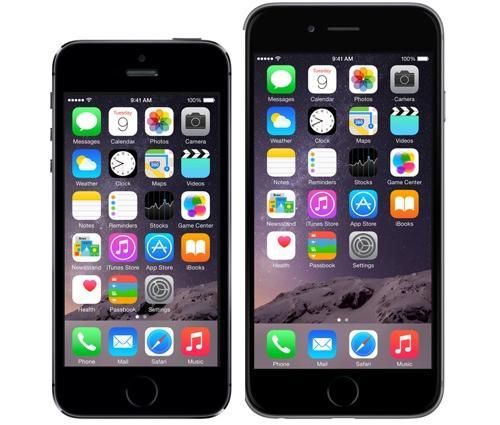
Smartphone cases have gone from a necessary evil that protect your phone from the inevitable bumps and bruises of everyday life to sophisticated fashion statements.
And the newest crop of cases and bumpers for the iPhone 6 and 6 Plus are no different. We’re talking about cases that range from beefy pieces of rubbery plastic to shells made of all-natural wood and leather, and everything in between.
In other words, if you’re looking for some new cases for your iPhone 6 or 6 Plus, you might want to start with these.
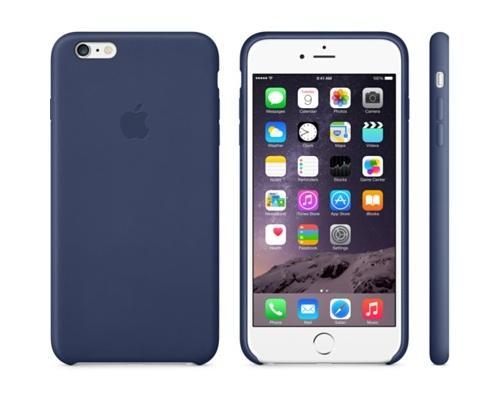
Apple’s own leather cases for the iPhone 6 and 6 Plus are as simple as cases get. Priced at $45 and $49 for the 6 and 6 Plus, respectively, Apple promises that these leather cases will protect your phone without adding much bulk.
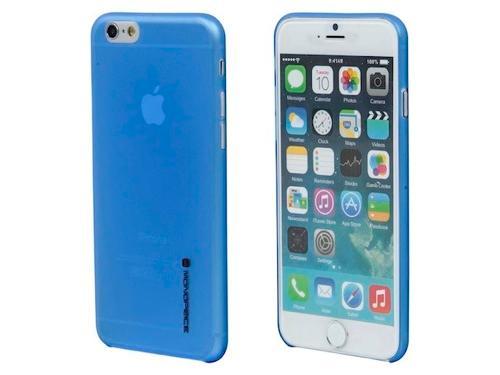
Monoprice’s ultra-thin shatterproof case for the iPhone 6 is available for just $5.60 and will protect your precious smartphone against the nicks and cuts that result from everyday drops. It won’t, however, protect your screen much. So if your iPhone face-plants, its screen is still at risk of shattering. But if you want a case for your phone and don’t want to spend $50, you can’t go wrong with this one.

OtterBox is known for offering super-sturdy smartphone cases, and its Defender Series is the company’s beefiest of all. Priced at $59.90 and $69.60 for the iPhone 6 and 6 Plus, respectively, the Defender Series packs three layers of protection, a built-in screen protector, and port covers to protect against dust. And for everyone stuck in 2009, the Defender also includes a belt holster that doubles as a kickstand.

Want to protect your iPhone and ditch your wallet? The Speck CandyShell Card Case has you covered. Offering an impact-resistant outer coating and a raised bezel to protect your phone’s display, the Card Case is seriously durable. What’s more, its backside features room for three credit cards and some folded bills. Priced at $39 for the iPhone 6 and $44 for the iPhone 6 Plus, it’s a 2-for-1 special for your smartphone.

If you want to add some extra pizazz to your iPhone 6 or 6 Plus, look no further than Case-Mate’s Brilliance Case. At $80 for both iPhone 6 and 6 Plus models, the Brilliance Case’s back panel is covered in shimmering crystals. The Brilliance isn’t just a pretty face, though. It also offers dual-layer protection, and its bezel extends past the iPhone’s display to keep it from smacking against the floor if you drop it face-down.
![Stowaway [Advance] iPhone case from Incipio](https://s.yimg.com/cd/resizer/2.0/FIT_TO_WIDTH-w500/e739a9071438f6e957e96f509455458472e898f0.jpg)
7. Radius v2

The folks at BiteMyApple call this case the bikini of iPhone cases, and for good reason. The Radius v2 uses the bare minimum of material needed to cover and protect your iPhone 6 ($79) or 6 Plus ($89) from drops, bumps, and bruises. Unlike most cases, the Radius v2 doesn’t completely cover up the iPhone 6’s beautiful shell. The trade-off is that it also leaves the phone more exposed, making it susceptible to scratches and nicks. That said, it certainly looks cool.

The iPhone 6 and 6 Plus have taken some knocks for being a bit more slippery than their predecessors. Griffin Technology’s Identity Performance case ($40) seeks to solve that problem with a no-skid back panel. And if your phone does slip from your grasp, the Identity Performance’s shell will protect it from drops as high as 4 feet. An included reusable screen protector will also keep your iPhone’s display safe from scratches and nicks.

Grovemade’s Walnut and Leather iPhone Case lets your iPhone go au naturel without you having to fear that it’ll break if it slips from your hand. That’s because, Grovemade’s cases are made using all-natural walnut wood. Get it, naturel, natural? … Anyway, the Walnut and Leather iPhone Case protects your iPhone from falls while also doubling as a stand thanks to its flexible leather cover. These handcrafted cases cost $129 for the iPhone 6 and $139 for the 6 Plus.

Tech21’s cases use a special D30 material that is both flexible and durable to help absorb impacts from falls. They’ve smashed the stuff with a hammer in demonstrations, and it doesn’t break. Available for $35 for the iPhone 6 and $39 for the 6 Plus, the Classic Shell offers protection for both the front and back of your precious smartphone. But please don’t try the hammer thing.
Invensense MPU-6500 sales to be lower due to issues; less iphones to be serviced
The MPU-6500 is the company’s second generation 6-axis MotionTracking device for smartphones, tablets, wearable sensors , and other consumer markets. The MPU-6500, delivered in a 3x3x0.9mm QFN package, is the world’s smallest 6-axis MotionTracking device and incorporates the latest InvenSense design innovations for MEMS gyroscopes and accelerometers, enabling dramatically reduced chip size and power consumption, while at the same time improving performance and cost. The new MPU-6500 addresses the market requirements for high performance applications such as pedestrian navigation, context-aware advertising, and other location-based services, along with supporting the specifications for emerging wearable sensor applications such as remote health monitoring, sports and fitness tracking, and other consumer applications. The MPU-6500 MotionTracking device sets a new benchmark for 6-axis performance with nearly 60% lower power, a 45% smaller package, industry-leading consumer gyroscope performance, and major improvements in accelerometer noise, bias, and sensitivity.
The single-chip MPU-6500 integrates a 3-axis accelerometer, a 3-axis gyroscope, and an onboard Digital Motion Processor™ (DMP) in a small 3x3x0.9mm QFN package. The new 6-axis device is the world’s first motion sensor to operate at 1.8 volts and consumes only 6.1mW of power in full operating mode; it incorporates breakthrough gyroscope performance of only ±5dps zero-rate-output and 0.01dps/√Hz of noise; and delivers dramatically improved accelerometer specifications including a typical offset of only ±60mg, 250µg/√Hz of noise, and only 18µA of current in low-power mode.
The MPU-6500 software drivers are fully compliant with Google’s Android 4.1 Jelly Bean release, and support new low-power DMP capabilities that offload the host processor to reduce power consumption and simplify application development. The MPU-6500 includes MotionFusion and run-time calibration firmware enables consumer electronics manufacturers to commercialize cost effective motion-based functionality.
Rosenblatt Securities is changing its stance on from bullish to cautious, and says there's a risk of the company losing 50%-100% of its iPhone 6 sales due to technical issues.
Specifically, Rosenblatt says the problem is related to the "technical instability" of InvenSense's 6-axis MPU-6700 gyroscope/accelerometer, something that possibly affects how it interacts with some iPhone features.
Baird downgraded InvenSense last week, while reporting a major smartphone OEM could be switching to a dual-source strategy for gyroscopes and other components.
Pac Crest took the note to suggest Apple is using a Bosch accelerometer in the iPhone 6 to go with InvenSense's motion sensor. The firm downplayed the importance of the move, arguing Apple simply wants to lower power draw by including a standalone accelerometer.
The single-chip MPU-6500 integrates a 3-axis accelerometer, a 3-axis gyroscope, and an onboard Digital Motion Processor™ (DMP) in a small 3x3x0.9mm QFN package. The new 6-axis device is the world’s first motion sensor to operate at 1.8 volts and consumes only 6.1mW of power in full operating mode; it incorporates breakthrough gyroscope performance of only ±5dps zero-rate-output and 0.01dps/√Hz of noise; and delivers dramatically improved accelerometer specifications including a typical offset of only ±60mg, 250µg/√Hz of noise, and only 18µA of current in low-power mode.
The MPU-6500 software drivers are fully compliant with Google’s Android 4.1 Jelly Bean release, and support new low-power DMP capabilities that offload the host processor to reduce power consumption and simplify application development. The MPU-6500 includes MotionFusion and run-time calibration firmware enables consumer electronics manufacturers to commercialize cost effective motion-based functionality.
Rosenblatt Securities is changing its stance on from bullish to cautious, and says there's a risk of the company losing 50%-100% of its iPhone 6 sales due to technical issues.
Specifically, Rosenblatt says the problem is related to the "technical instability" of InvenSense's 6-axis MPU-6700 gyroscope/accelerometer, something that possibly affects how it interacts with some iPhone features.
Baird downgraded InvenSense last week, while reporting a major smartphone OEM could be switching to a dual-source strategy for gyroscopes and other components.
Pac Crest took the note to suggest Apple is using a Bosch accelerometer in the iPhone 6 to go with InvenSense's motion sensor. The firm downplayed the importance of the move, arguing Apple simply wants to lower power draw by including a standalone accelerometer.
Tuesday, September 23, 2014
3D systems gets huge deal???
3D Systems (NYSE: DDD) gained Tuesday on reports it may have entered into an unexpected Bluebird pact with General Motors (NYSE: GM) in Q3. The deal could be worth $6-$8 million, said Piper Jaffray analyst Troy Jensen, citing industry contacts.
"To our knowledge Detroit experienced significant rainfall over a short period of time and this caused a flood in General Motors Rapid Prototyping facility. The flooded facility was rumored to have up to 5 feet of water and the water had sewage mixed in with it. This ultimately ruined multiple machines and we believe General Motors purchased or ordered 11 iPro 8000s (list for roughly $600K) and a couple of SinterStation machines in the September quarter," said Jenson.
"Given this deal was likely not in 3D Systems pipeline, we believe it will provide a boost to the company's system revenues/backlog in the September quarter," he added.
This news gave a boost that DDD Really needed as the sector has been cold of late on positive catalysts and the stocks have been sufferred
"To our knowledge Detroit experienced significant rainfall over a short period of time and this caused a flood in General Motors Rapid Prototyping facility. The flooded facility was rumored to have up to 5 feet of water and the water had sewage mixed in with it. This ultimately ruined multiple machines and we believe General Motors purchased or ordered 11 iPro 8000s (list for roughly $600K) and a couple of SinterStation machines in the September quarter," said Jenson.
"Given this deal was likely not in 3D Systems pipeline, we believe it will provide a boost to the company's system revenues/backlog in the September quarter," he added.
This news gave a boost that DDD Really needed as the sector has been cold of late on positive catalysts and the stocks have been sufferred
Bed Bath And Beyond Earnings
Bed Bath & Beyond Inc. (BBBY) today reported net earnings of $1.17 per diluted share ($224.0 million) in the fiscal second quarter ended August 30, 2014, compared with net earnings for the fiscal second quarter of 2013 of $1.16 per diluted share ($249.3 million). Net sales for the fiscal second quarter of 2014 were approximately $2.945 billion, an increase of approximately 4.3% from net sales of approximately $2.824 billion reported in the fiscal second quarter of 2013. Comparable sales in the fiscal second quarter of 2014 increased by approximately 3.4%, compared with an increase of approximately 3.7% in last year's fiscal second quarter.
During the fiscal second quarter of 2014, the Company repurchased approximately $1.0 billion of its common stock, representing approximately 16.9 million shares. As of August 30, 2014, the remaining balance of the new $2.0 billion share repurchase program authorized in July 2014 was approximately $1.8 billion.
For the fiscal first half ended August 30, 2014, the Company reported net earnings of $2.09 per diluted share ($411.0 million) compared with $2.09 per diluted share ($451.8 million) in the corresponding period a year ago. Net sales for the fiscal first half of 2014 were approximately $5.602 billion, an increase of approximately 3.0% from net sales of approximately $5.436 billion in the corresponding period a year ago. Comparable sales for the fiscal first half of 2014 increased by approximately 2.0%, compared with an increase of approximately 3.5% in last year's fiscal first half.
The Company is modeling net earnings per diluted share to be approximately $1.17 to $1.21 for the fiscal third quarter of 2014, approximately $1.78 to $1.83 for the fiscal fourth quarter of 2014, and approximately $5.00 to $5.08 for the fiscal full year. The timing and amount of the Company's share repurchases impacts the quarterly and full year diluted weighted average shares outstanding differently with the impact on the individual quarters being greater than the impact on the full year. Therefore, the sum of the net earnings per diluted share for the four fiscal quarters of the year, representing the two fiscal quarters already reported, and the estimated net earnings per diluted share for the third and fourth fiscal quarters, are greater than the estimated fiscal full year net earnings per diluted share by approximately five to six cents. The modeling of net earnings per diluted share is based upon a number of assumptions which will be described in the Company's second quarter of fiscal 2014 conference call. Information regarding access to the call is available in the Investor Relations section of the Company's website, www.bedbathandbeyond.com.
Cost Plus World Market was excluded from the comparable sales calculations through the end of the fiscal first half of 2013 and is included beginning with the fiscal third quarter of 2013. Linen Holdings is excluded from the comparable sales calculations and will continue to be excluded on an ongoing basis because it represents non-retail activity.
During the fiscal second quarter of 2014, the Company repurchased approximately $1.0 billion of its common stock, representing approximately 16.9 million shares. As of August 30, 2014, the remaining balance of the new $2.0 billion share repurchase program authorized in July 2014 was approximately $1.8 billion.
For the fiscal first half ended August 30, 2014, the Company reported net earnings of $2.09 per diluted share ($411.0 million) compared with $2.09 per diluted share ($451.8 million) in the corresponding period a year ago. Net sales for the fiscal first half of 2014 were approximately $5.602 billion, an increase of approximately 3.0% from net sales of approximately $5.436 billion in the corresponding period a year ago. Comparable sales for the fiscal first half of 2014 increased by approximately 2.0%, compared with an increase of approximately 3.5% in last year's fiscal first half.
The Company is modeling net earnings per diluted share to be approximately $1.17 to $1.21 for the fiscal third quarter of 2014, approximately $1.78 to $1.83 for the fiscal fourth quarter of 2014, and approximately $5.00 to $5.08 for the fiscal full year. The timing and amount of the Company's share repurchases impacts the quarterly and full year diluted weighted average shares outstanding differently with the impact on the individual quarters being greater than the impact on the full year. Therefore, the sum of the net earnings per diluted share for the four fiscal quarters of the year, representing the two fiscal quarters already reported, and the estimated net earnings per diluted share for the third and fourth fiscal quarters, are greater than the estimated fiscal full year net earnings per diluted share by approximately five to six cents. The modeling of net earnings per diluted share is based upon a number of assumptions which will be described in the Company's second quarter of fiscal 2014 conference call. Information regarding access to the call is available in the Investor Relations section of the Company's website, www.bedbathandbeyond.com.
Cost Plus World Market was excluded from the comparable sales calculations through the end of the fiscal first half of 2013 and is included beginning with the fiscal third quarter of 2013. Linen Holdings is excluded from the comparable sales calculations and will continue to be excluded on an ongoing basis because it represents non-retail activity.
Friday, September 19, 2014
Apple SMASHES NYC record
A record number of people waited (and waited) for the iPhone 6 and 6 Plus on Friday at Apple's (AAPL) flagship Fifth Avenue location, suggesting that sales are off to a better-than-forecast start, according to a note from Piper Jaffray.
As of 8 a.m. ET, 1,880 people were in line for the launch, a 33 percent increase from the wait for the iPhone 5S and 5C and more than 240 percent higher than the wait for the iPhone 5. Some had lined up for days.
"It was a lot better than what we would have thought," senior Piper Jaffray analyst Gene Munster said in a phone interview. "We kind of came in with some measured expectations because a year ago the lines were inflated because they didn't do preorders."
He cautioned about the implications of the better-than-expected numbers, saying: "It's an early way to get a pulse. We don't wait to overemphasize it."
Munster expects Apple to sell out of units this weekend.
Annaly's dividend
Annaly Capital (NYSE:NLY) just announced their common stock dividend for the third quarter. Annaly has declared the third quarter 2014 common stock cash dividend to be $0.30 per common share. This dividend is payable October 31, 2014, to common shareholders of record on October 1, 2014. The ex-dividend date is September 29, 2014. The dividend is in line with the first and second quarter dividend payments.
For an in depth article please see this piece
For an in depth article please see this piece
Thursday, September 18, 2014
Pepsi starting war with NFL?
At this point even Roger Goodell must be questioning the very God who somehow deemed him worthy of being paid $44 million to sit at the head of the most powerful non-profit organization not based in Vatican City.
The NFL's day started with the Minnesota Viking's 12:47am announcement that Adrian Peterson had been placed on something called the Exempt Commissioner's Permission list. Peterson was later joined on the list by Carolina Panther’s lineman Greg Hardy as he appeals his July conviction on charges of assaulting and threatening to kill his girlfriend.
Don’t weep for Peterson and Hardy. Per the previously obscure terms of the ECP List players are paid their full salaries provided they do anything other than show up for work. That means Peterson and Hardy will collect a combined $24.87 million to stay home and spend time with their families.Hours later Arizona Cardinal running back Jonathan Dwyer was arrested on domestic abuse charges.
None of this is sitting well with sponsors. Pepsi is the latest company to express concern in the form of a letter of quasi-support from CEO Indra Nooyi. In her letter Nooyi acknowledged that a cloud has fallen over the integrity of the league but expressed guarded confidence that the commissioner will do the right thing “immediately.”
Don’t underestimated just how conditional her support is and how much is at stake for the NFL in this. In 2012 Pepsi signed a 10-year deal worth an estimated $2.3 billion that makes the company’s suite of products everything from the official softdrink to chip and Oatmeal of the NFL. That deal is only with the league. Nooyi may say she likes Goodell as a person but she’ll throw him into an oil drum next to Jimmy Hoffa when push comes to shove.
In 2002 when Pepsi stole the right to be the official beverage of the NFL the league’s then VP of corporate sponsorships welcomed them by telling the Wall Street Journal the league “didn’t have a lot to lose either way.” It would seem that control dynamic is changing.
The League is the Rose of Tralee of sponsorship deals. It’s got so many partners it has a hard time even keeping their names straight. Microsoft is paying $80 million a year to make the Surface the office tablet of the league and the announcers on Monday Night Football called them iPads repeatedly in week one.
Coors (not Bud) is the official beer of the NFL. They’re paying a reported $300 million over 5 years and are completely overshadowed by Bud’s Super Bowl ads. Motorola is paying the league more than $20 million a year to be the official… something... but the NFL still signed a deal with Verizon to stream games. Most of the sponsors paying the NFL nearly $10 billion a year in fees are doing so just to be associated with the Shield and right now that’s the last thing any of them want.
The real issue facing the league is whether or not associating with the league has ever been worth it. Last year Super Bowl ads went for $8 million for 60 seconds. The surprise winner of the night was RadioShack with it’s memorable “The 80s want their store back” campaign. 8 months later the chain is down to its $25 million and facing bankruptcy.
The NFL is a terrible partner. It's a sham. Goodell isn't the problem, or at least he wouldn't be, except for his declaring himself the moral enforcer years ago.
The ratings being up doesn't matter. Goodell will be gone before October 1st. Why then? Because that's the beginning of Breast Cancer Awareness month during which players on all teams will wear pink on their uniforms.
As calculated by Business Insider 5% of the proceeds from merchandise sold goes to fighting breast cancer. Not even Goodell can survive running a league seen as soft on domestic violence and presiding over a scam charity drive designed to sell jerseys
Wednesday, September 17, 2014
Full iPhone 6 Review
Originally written by my friend David---Repost Approval- 9/17-
When Apple unveiled the iPhone 6 last week, it made the front pages of newspapers. It dominated Google Search and Twitter. It triggered an avalanche of sniping and worshiping on the Web’s comment boards.
About a phone? Really?
Well, that’s what you’d say if you were an alien. If you’re human, you know why all the fuss. The iPhone is not just a phone; it’s a symbol. The phone you own doesn’t just let you make phone calls; it marks you as belonging to a religion. Maybe a cult.
Each year’s new iPhone is another test for Apple. The world wants to know if Apple’s still got it, even without Steve Jobs. The faithful want the company to hit another one out of the park. The enemy can’t wait for the company to fumble.
Well, this time, Apple hasn’t fumbled. Its two new iPhones are excellent. Beautiful. State of the art. Worthy heirs to the iPhone throne.
There’s nothing actually surprising about the iPhone 6 and iPhone 6 Plus. Partly that’s because in the post-Jobs era, Apple isn’t as good at suppressing pre-announcement leaks. And partly it’s because there’s nothing much surprising about any phones these days. They’re mature. These days, designing a phone is a matter of nips and tucks and playing catch-up and one-up — as attractively as possible.
Meet the familyThis year, there are two new models: the iPhone Bigger and the iPhone Bigger-er.
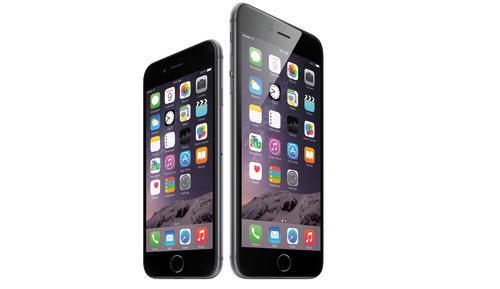
(Apple)
Their real names are the iPhone 6 ($200 and up with two-year contract) and the iPhone 6 Plus ($300 and up with contract).
And yes, that’s the big news: They have bigger screens than any iPhone before them. Steve Jobs used to mock Samsung’s increasingly jumbo smartphones, calling them “Hummers.” But apparently big is what the public wants. So big is what we get.
Here they are: the new iPhones, posed next to last year’s model, so you can get an idea of the scale:
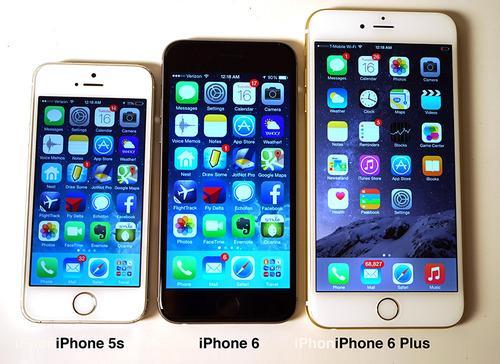
And here, for your reference, are the new iPhones among their Android rivals:
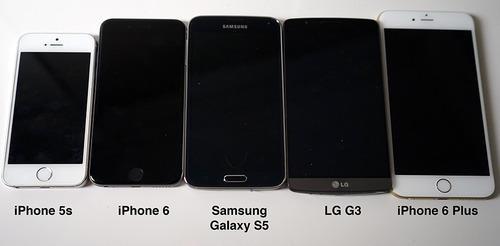
What’s wild is that at first, the iPhone 6 doesn’t seem bigger than the iPhone 5. The first thing most people say when they pick it up is, “It doesn’t seem that big!” You have to hold an iPhone 5s next to it before you really notice.
Part of the explanation may be the Apple diet: These new phones are thin. About a quarter of an inch. Thinner than their rivals from Samsung, HTC, or LG. If you order one online, FedEx will probably slip it under your door.
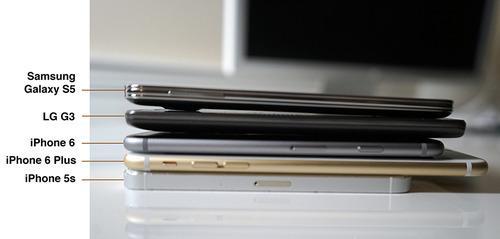
The aluminum body has smooth, rounded edges — a more comfortable shape than the sharpened corners of the iPhone 4 and 5 era. The ring around the camera lens on the back protrudes about a millimeter; it’s no longer perfectly flush.
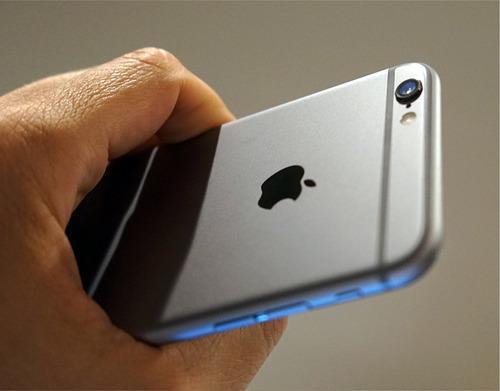
The screens are terrific. The smaller iPhone 6’s screen has 1334 × 750 pixels (326 dots per inch), and the Plus’s screen is 1920 × 1080 pixels (401 dpi), which is full high definition. Other phones have more dots or smaller ones, but at this point, everybody is just chasing unicorns; these screens have long since exceeded the ability of our eyes to distinguish pixels.
What to do with more screenThere’s a downside to having a bigger screen: You have to carry around a bigger phone. The small of hand won’t be thrilled about the added width. The iPhone 6 Plus, in particular, is a pocket-filler.
Apple is clearly aware of the drawbacks of gigantism. It has made some tweaks to make the size less awkward. The power/sleep button, for example, is on the side now instead of the top, so your thumb can reach it. (That’s a problem for people who use a volume key on the opposite edge as the camera shutter. Now when you grip the phone for photography, your thumb naturally falls on the sleep switch — and turns it off!)
The plus-sized 6 Plus, in fact, is well on its way to becoming an iPad Nano. As on an iPad, many of its built-in apps sprout extra panes when you turn the phone 90 degrees — like Mail and Calendar, for example:

Even the home screen rotates now, for the first time in iPhone history. (Some of Apple’s own apps rotate this way only on the 6 Plus, not the 6. Other software companies’ apps may rotate on both.)
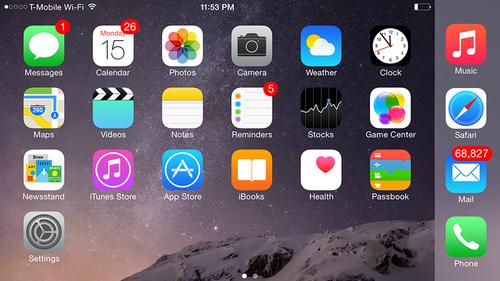
Also on the Plus: When you’re typing in landscape mode, there’s so much extra space that Apple has thrown in some additional on-screen keys. On the left: buttons for Cut, Copy, Paste, Bold, and Undo. On the right: Punctuation keys and actual cursor keys—a first on the iPhone.
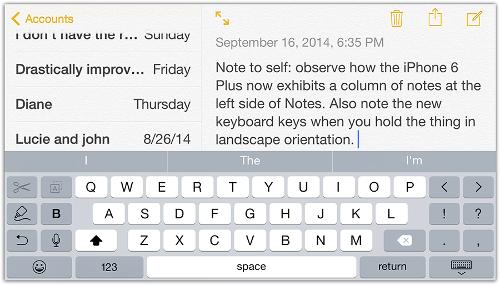
On both phones, if there’s something at the top of the screen, too far away for your shrimpy little thumb to reach, you can touch the home button twice (touch, not click) to make the screen image slide down so you can reach what was at the top.
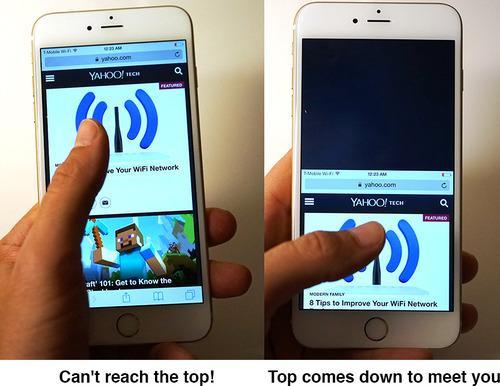
With this larger phone now usable one-handed, what do you really get for all that size? There are some huge advantages to having a huge phone. The obvious one, of course, is more screen. Both models are much better for reading ebooks, answering email, watching movies, surfing the Web, and so on. The iPhone 6 Plus may look a little goofy when you hold it to your ear to make phone calls, especially if you’re small of head, but, wow, is it luxurious when you’re trying to consult a map.
A less-obvious advantage to huge is compensating for over-40 eyes. In Settings, you can specify whether you want your phone to show more, or to show the same thing bigger. Here’s the effect:
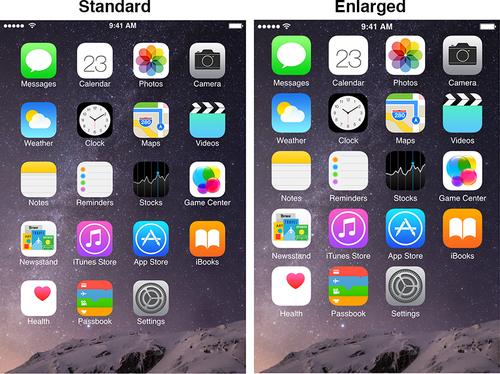
Apple has moved the Adjust Type Size (and Bold Text) controls out of the buried Settings panel where they used to be. They’re now front and center on the Display Preferences screen.
The upshot: With some Settings tweaks, these phones can be godsends for anyone who puts on reading glasses to check her phone.
The gutsInside, Apple has been up to its usual tightening and polishing. There’s a new chip inside that Apple says is 25 percent faster. You wouldn’t notice it without testing the old and new phones side by side. Apps, for example, pop open about a half-second faster on the new phone.
Apple says that the radio circuitry inside can tune into 20 bands of LTE (fast cellular Internet), which means that this phone works on the high-speed Internet networks of many more countries than its rivals. (The Samsung Galaxy S5, for example, gets six bands of LTE.) That’s a perk only if you travel overseas, of course.
A bigger phone means there’s room for a bigger battery. The iPhone 6 gets slightly better battery life — 14 hours of reported talk time, up from 10; 11 hours of Web surfing on WiFi, up from 10. The iPhone 6 Plus gets substantially better life: 24 hours of talk time, 12 hours of browsing, and so on. You’ll still have to charge the iPhone 6 daily, but the iPhone 6 Plus might actually make it two days on a charge.
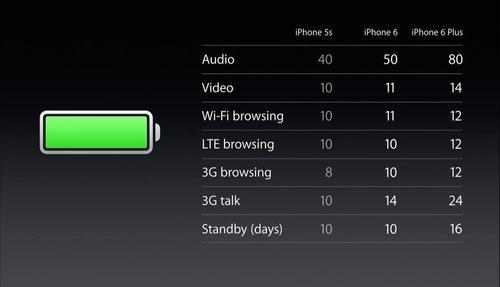
The new iPhones still don’t have removable memory cards. But at least you can buy them with more storage than before: They come in 16-, 64-, and, now, 128-gigabyte versions. That’s a heck of a lot of text messages and photos, although it’s weird that the sweet spot — 32 gigabytes — isn’t in the lineup.
The cellular circuitry offers some really cool refinements, although you won’t see the benefits for a while. The iPhone 6 is among the first VoLTE phones (pronounced “VOLty”). It stands for “voice over LTE,” and it means super-clear, rich sound quality — like FM instead of AM — when you’re calling another VoLTE phone.
Unfortunately, VoLTE does nothing for you unless your cellphone carrier has upgraded its network. So far, only T-Mobile has done that nationwide. The other carriers are still experimenting.
The iPhone 6 can also place calls over WiFi. You call people the same way, but you get to use your indoor WiFi router, and you don’t use up any cellular minutes. In fact, if you start a call in WiFi and then walk outside into a cellular LTE area, you don’t even drop the call. To make this work, I had to change two settings in Settings and restart the phone — but it finally did work, and beautifully. These features, too, work only on T-Mobile at the moment.
Apple PayTwo years ago, I sought out a 7-Eleven near my house because it had a contactless payment terminal on its cash register:
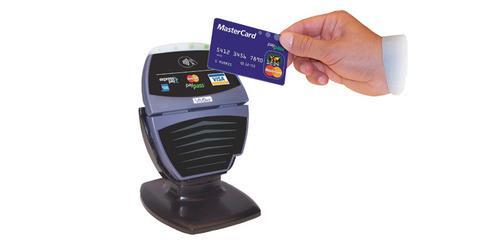
I was testing Google Wallet, a feature of some Android phones that lets you pay for things without even pulling out your wallet; you could just hold the phone near that terminal thing. But it took a lot of steps, including tapping in a security code with every purchase.
I recently visited the same 7-Eleven. You know what the guy told me? That the last person he remembered using his contactless terminal was me, two years ago.
Almost nobody pays by phone-tapping in this country, probably because it’s slower and clunkier than just swiping your credit card.
Apple Pay, new in the iPhone 6, will be different, Apple says.
The iPhone 6 models have an NFC chip inside (near-field communications), just like Android phones. That makes them work on those same contactless terminals, of which there are 220,000 across the United States. But you won’t have to turn on your iPhone, open an app, or fool around with credit cards. You just hold your phone (screen still asleep) near the terminal with your finger on the Home button. The screen lights up, shows your preferred credit card, sends you a receipt, and the deal is done.
The Home button, of course, is also a fingerprint reader; no bad guy can steal your phone and then start buying stuff, unless he also chops off your thumb. There’s more security stuff, too; you can read about it here.
Nobody can try out Apple Pay yet, though, because Apple won’t be turning it on until October; at that point, we’ll get an iOS 8 software update that includes Apple Pay features. (One important one: You’ll be able to store your credit card details in the Passbook app just by taking a picture of your physical cards — no typing.)
CameraThe iPhone camera is getting scarily good. Here are a few samples:
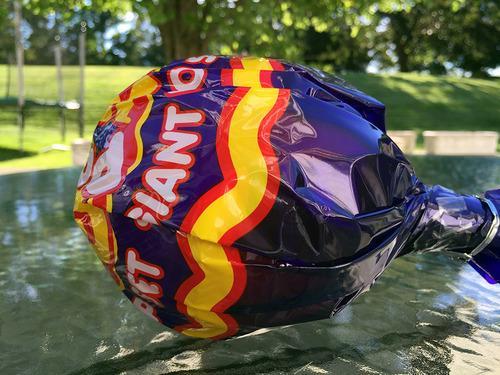


There’s now ultra-smooth, ultra-slow motion video (see the watermelon-smashing test in my video, above). There’s phase-detection autofocusing, which compares incoming light from two pixels for fast, precise focusing — or quick, smooth refocusing while recording video (hallelujah!).
The Plus model has optical image stabilization — the lens jiggles in precise motion to counteract the handheld movement of the phone itself — that works supremely well. To test it out, I fastened an iPhone 6 Plus and an iPhone 5s to a bike on this rig so that they would film exactly the same thing:
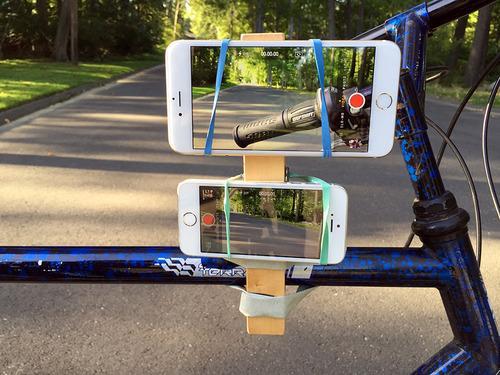
Then I rode around rough roads, filming. In my video above, you can see the side-by-side comparison of the two phones’ stabilization.
Free features for allSome of the iPhone 6’s features — design, screen, camera — are truly stunning. But you don’t have to ditch your old phone to get all of them.
That’s because tomorrow you’ll be able to download the newest Apple software for iPhones, iOS 8. Free.
You’ll be reading a lot more about iOS 8 here on Yahoo Tech, but trust me: Its ratio of useful features to glitzy ones is the highest in years. You won’t find many big-ticket items changed, but you will find loads of truly ingenious touch-ups that make phone life easier and less stressful.
A few of my favorites:
• When you tap the Add Photo button (to send a picture as a text message), you don’t have to burrow into your Photos collection; the last few photos you took present themselves immediately. Apple assumes that often, the photo you want to send is one of the most recent. (It’s correct.)

• You can use the fingerprint reader (iPhone 5s and 6 models) to do more than unlock the phone now. You can use it to log in to apps instead of remembering a password.
• There’s a Hyperlapse-style time-lapse video option.
• The keyboard is much better. Now you see the three words you’re most likely to type next, hovering just above the onscreen keyboard. (The video above shows it in action.)
• You gain the option to install other companies’ keyboards, like the popular Swype and SwiftKey keyboards.
• Siri’s command recognition (“Set my alarm”) has always been good, but now its dictation skills have been polished to a shine. It’s much, much more accurate — especially if you have an accent — and you see the words as you’re speaking them now.
• You can turn on hands-free, “always listening” mode for Siri whenever the phone is charging (for example, in the car). That is, even if it’s asleep, you can say, “Hey Siri” to make it listen to your next command.
A word to the armies of the faithful The iPhone 6 and iPhone 6 Plus are absolutely terrific phones. They’re fast and powerful and well designed. There’s not a single component that hasn’t been improved. These phones are a delight to behold and to be held.
But before we part, here’s a question that’s been the elephant in this room for years: If the iPhone is fantastic, does that mean that your phone is no good?
You will hear, for example — and it’s true — that Apple did not pioneer many of the iPhone 6’s big-ticket features. Other companies’ phones were first to introduce bigger phone screens; “always listening” voice commands; wireless payments; predictive keyboard words; phase-detection autofocusing; time-lapse video; optical image stabilizers; VoLTE calling; and so on.
That’s right: Apple has adapted features that first appeared on Android. Just as Google has adapted many features from Apple.
Why does it matter so much? If Apple is praised for doing good work, why does it so enrage Android fans — and vice versa?
The answer, of course, is that cellphones are deeply personal. When you buy a phone, you’re making an expensive bet. You can’t easily switch between the Google and Apple worlds; you’ve invested a lot in accessories, you’ve bought apps, you’ve learned that company’s software conventions. And you never want to think your phone is inferior, because then you might feel inferior.
So you wind up taking a side in this phone duopoly. You join a very silly — and unwinnable — religious war.
Judge the iPhone not just for what it is, but for the entire world that Apple has built around it: the apps, the music/movie/TV store, the integration with the Mac and iPad, the built-in online services. Does Apple generally do an excellent job with all of this? Yes.
Judge your Android phone the same way. Does it have a huge, open, lively world of apps and community online? Does it have a well-stocked movie/music/TV store? Is most of it well designed — and free? Yes.
Celebrate the iPhone’s excellence, even if you’re not in the Apple fold. And celebrate the best work of Samsung, HTC, and LG, even if you’re not part of the Android family.
Because, in the end, competition is what will make your phone better this time next year, or the year after that. The perpetual refinement of ideas, and the necessity to think up new ones, will benefit you — no matter which army you march with.
Subscribe to:
Posts (Atom)
Popular Posts
-
It wasn't the best and it wasn't the worst. InvenSense, Inc. (NYSE: INVN) the leading provider of intelligent sensor system on chip...
-
As many of my followers know I have been covering AT&T (NYSE:T) heavily of late because I continue to establish the thesis that the co...
-
This article will be the first time I have opined on Prospect Capital Corporation (NASDAQ:PSEC) a beaten down stock with a great yield. Whil...
-
Netflix (NASDAQ:NFLX) is pressing the FCC to reject the $48B merger of AT&T (NYSE:T) and DirecTV (NASDAQ:DTV), according to regulatory f...
-
Fifth Street Finance Corp. (NASDAQ:FSC) announced its financial results for the first fiscal quarter ended December 31, 2014. First Fiscal...

